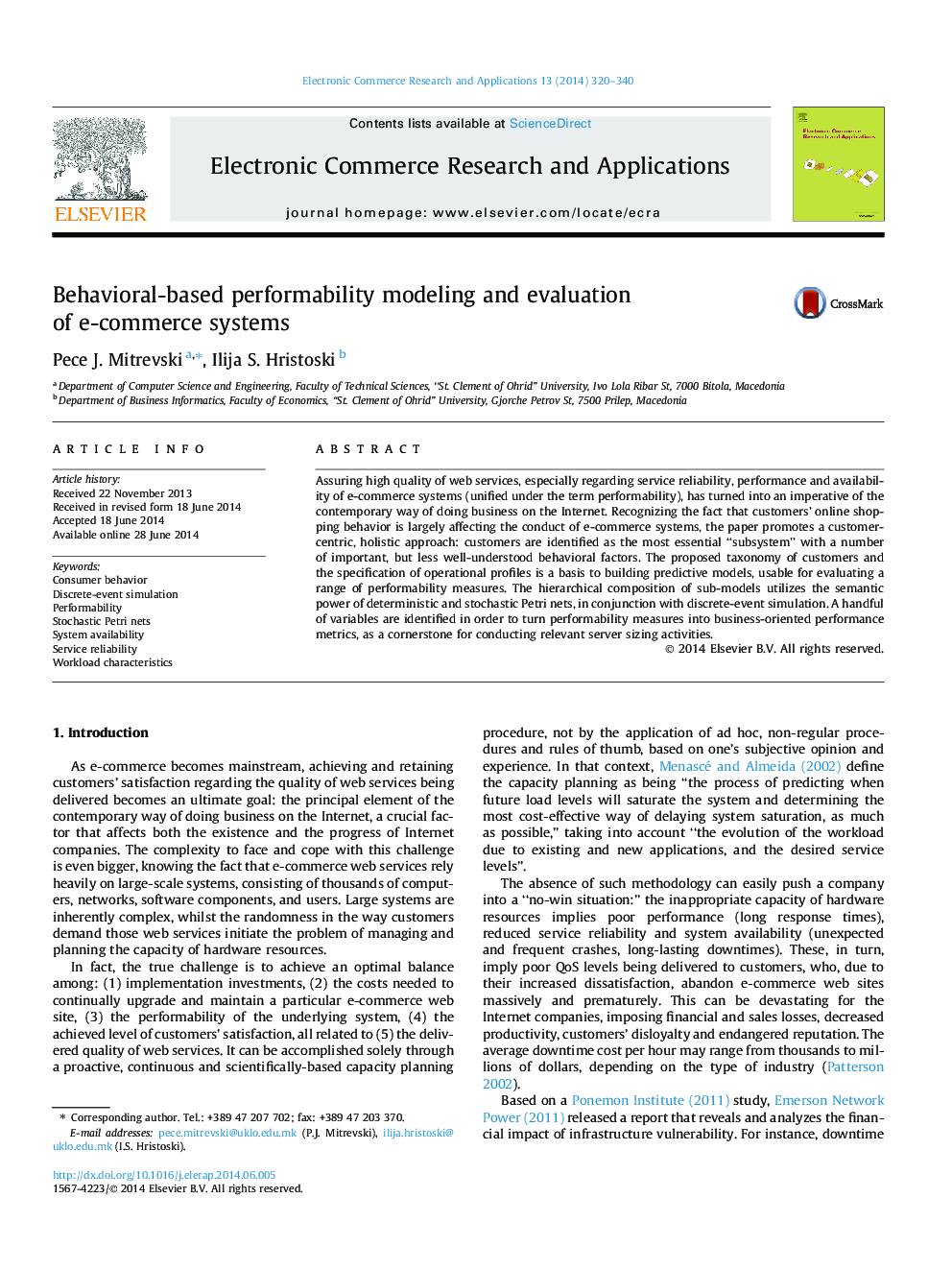| کد مقاله | کد نشریه | سال انتشار | مقاله انگلیسی | نسخه تمام متن |
|---|---|---|---|---|
| 379765 | 659505 | 2014 | 21 صفحه PDF | دانلود رایگان |
• We model customers’ shopping behavior with deterministic and stochastic Petri nets.
• We employ hierarchical composition of sub-models to build a performability model.
• We propose taxonomy, specify operational profiles and use discrete-event simulation.
• Highly available e-commerce system will not always lead to higher user-perceived QoS.
• Performability measures are turned into business-oriented metrics for server sizing.
Assuring high quality of web services, especially regarding service reliability, performance and availability of e-commerce systems (unified under the term performability), has turned into an imperative of the contemporary way of doing business on the Internet. Recognizing the fact that customers’ online shopping behavior is largely affecting the conduct of e-commerce systems, the paper promotes a customer-centric, holistic approach: customers are identified as the most essential “subsystem” with a number of important, but less well-understood behavioral factors. The proposed taxonomy of customers and the specification of operational profiles is a basis to building predictive models, usable for evaluating a range of performability measures. The hierarchical composition of sub-models utilizes the semantic power of deterministic and stochastic Petri nets, in conjunction with discrete-event simulation. A handful of variables are identified in order to turn performability measures into business-oriented performance metrics, as a cornerstone for conducting relevant server sizing activities.
Journal: Electronic Commerce Research and Applications - Volume 13, Issue 5, September–October 2014, Pages 320–340
